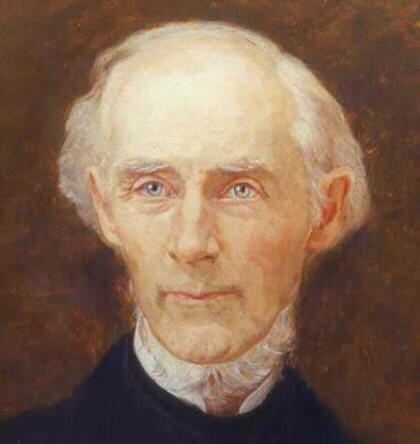Richard Owen spent much of his early life as a teacher. He served for a time in the Mexican War, commanding a company under General Taylor. At the close of the war he became his brother's chief assistant, and was the first geologist to explore the northern shore of Lake Superior. For a time he held a professorship in the Western Military Institute in Kentucky, and afterward a similar position in a college in Nashville.
This position he resigned to become his brother's successor as State Geologist of Indiana [upon his brother's death in 1860]. While engaged in the survey of the State the civil war began, and he became lieutenant colonel of the Fifteenth Indiana regiment... He took part in the battles of Rich Mountain and Greenbriar, and was promoted to the rank of colonel of the Sixteenth Indiana regiment.
The following facts regarding the war record of Colonel Owen I quote from an address by Judge R. W. Miers, one of his students: "In the winter of 1861-'62, he guarded at Indianapolis four thousand prisoners captured at Fort Donelson. In the spring of the following year he was ordered to Kentucky, where his regiment was taken prisoners of war by General Bragg at Mumfordsville. Three months later they were exchanged. Although the regiment was paroled, Dr. Owen was not, nor were his side arms taken from him. On the contrary, General Buckner went out into the field where the regiment was guarded, and thanked Colonel Owen for his kindness to the four thousand Fort Donelson prisoners at Camp Morton."
On January 1, 1864, he assumed the duties of [Professor of Natural Science at Indiana University], which he continued to fill for fifteen years... In 1872 Dr. Owen was elected President of Purdue University... This position he accepted, but, as after two years the school still remained unorganized, he never assumed the duties of the office.
The standard biography,
Victor Lincoln Albjerg, Richard Owen: Scotland 1810, Indiana 1890, The Archives of Purdue, 1946,
contains an incomplete list of Owen's publications; additional publications are listed in
N. H. Winchell, "A Sketch of Richard Owen," The American Geologist 6 (1890) 134-145,
along with a summary of Richard Owen's contributions to geology:
Dr. Owen's lines of research were marked by originality and his conclusions, though often striking, if not bold, were put modestly before the public. He was one of the best authorities on earthquakes, and on the location of the centers of their disturbances, and their movements in given lines.
Among Owen's publications are
Key to the Geology of the Globe, with numerous original maps and diagrams,
A. S. Barnes & Co., New York, 1857.
Report of a geological Reconnaissance of Indiana
(with David Dale Owen), Indianapolis, 1862.
See also
Charles M. Cummings, "Richard Owen, Teacher in Tennessee," Tennessee Historical Quarterly 28 (1969) 273-296, and
N. Gary Lane, "The Richard Owen Geological Survey of Indiana, 1859-1860," Proceedings of the Indiana Academy of Science 96 (1987) 353-359.
The author of this account, Professor Emeritus of Paleontology, Department of Geology, Indiana University, writes in his Introduction:
In this day of four-wheel drive vehicles, freeze-dried foods and motels, it is hard to imagine the day-to-day existence necessary to undertake an extended geological survey of a large area 120 years ago. . .
The Richard Owen survey of Indiana in 1859 and 1860 provides an opportunity to gain insight into the working operations of such a field survey, for two reasons. First, one of Owen's original field notebooks for 1859 is preserved in the Indiana State Library, and provides a detailed account for about 23 days of that survey. Second, in 1861 the General Assembly of Indiana published rather detailed expense accounts and vouchers submitted by David Dale Owen (1807-1860) for most of the survey field work of 1860. These accounts permit us to glimpse some of the daily activity of the survey party that would otherwise be lost.
Owen Hall on the campus of Indiana University, Bloomington
Statue of Colonel Richard Owen at Indiana University, Bloomington
New Harmony Scientists, Educators, Writers & Artists
Indiana University Archives Homepage
Clark Kimberling Home Page
